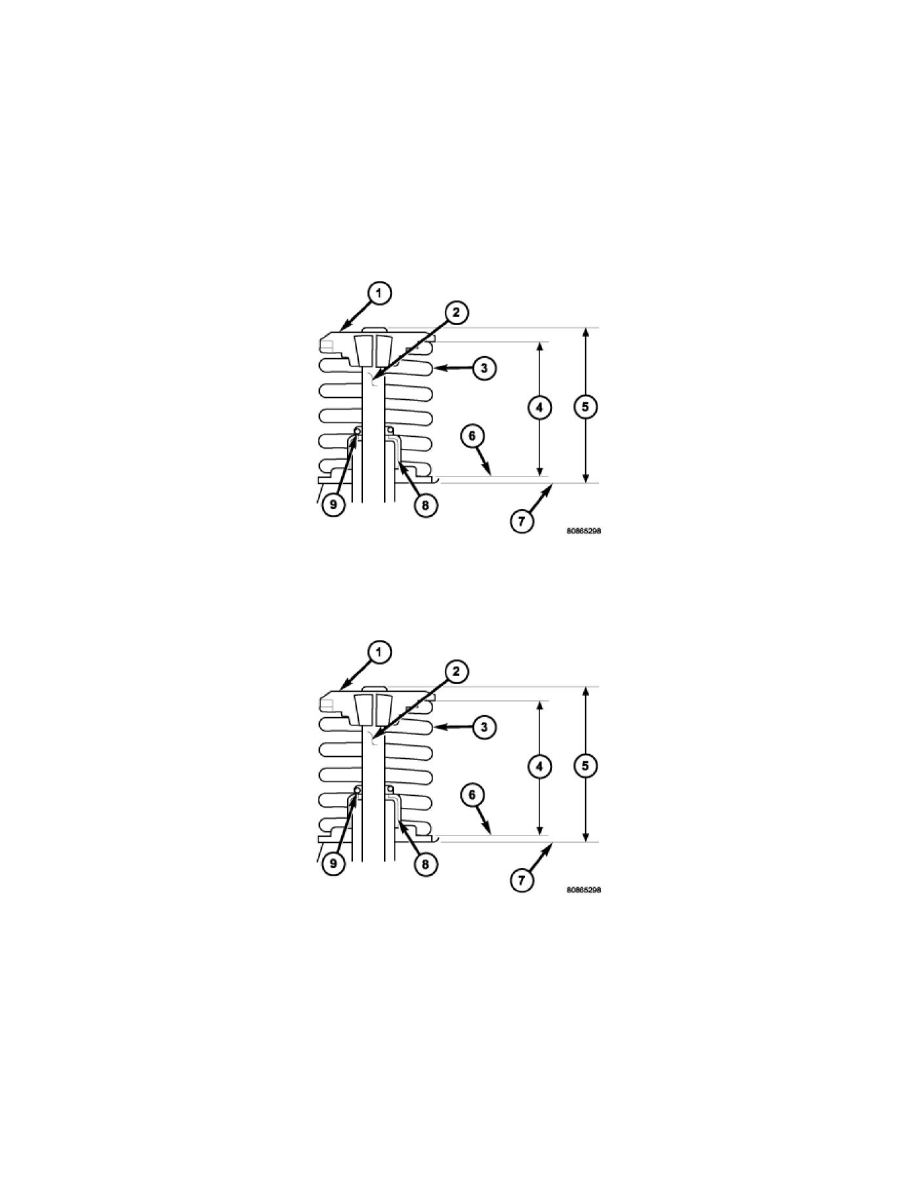Charger V6-2.7L VIN T (2007)

surface must be obtained.
1. Measure the concentricity of valve seat using dial indicator. Total runout should not exceed 0.051 mm (0.002 inch.) total indicator reading.
2. Inspect the valve seat (3) with Prussian blue to determine where the valve contacts the seat. To do this, coat valve seat (3)LIGHTLY with
Prussian blue then set valve in place. Rotate the valve with light pressure. If the blue is transferred to the center of valve face (4), contact is
satisfactory. If the blue is transferred to top edge of valve face, then lower valve seat with a 15 degree stone. If the blue is transferred to the bottom
edge of valve face, then raise valve seat with a 65 degree stone.
NOTE: Valve seats which are worn or burned can be reworked, provided that correct angle and seat width are maintained. Otherwise
cylinder head must be replaced.
3. When seat is properly positioned the width of the intake 1.00 to 1.50 mm (0.0394 to 0.0591 in.) and exhaust seats should be 1.25 to 1.75 mm
(0.049 to 0.069 in.).
4. Check the valve spring installed height (4) after refacing the valve and seat.
VALVE AND SPRING INSTALLED HEIGHT
1. Coat valve stems (2) with clean engine oil and insert them in cylinder head.
2. If valves or seats have been refaced, check valve tip height (5). If valve tip height (5) for intake valve is greater than 47.836 mm (1.883 in.) or
47.837 mm (1.883 in.) for exhaust valve, grind valve tip until within specifications. Make sure measurement is taken from cylinder head surface to
the top of valve stem.
3. Install valve seal/spring seat assembly (8) over valve guides on all valve stems. Ensure that the garter spring (9) is intact around the top of the
rubber seal.
